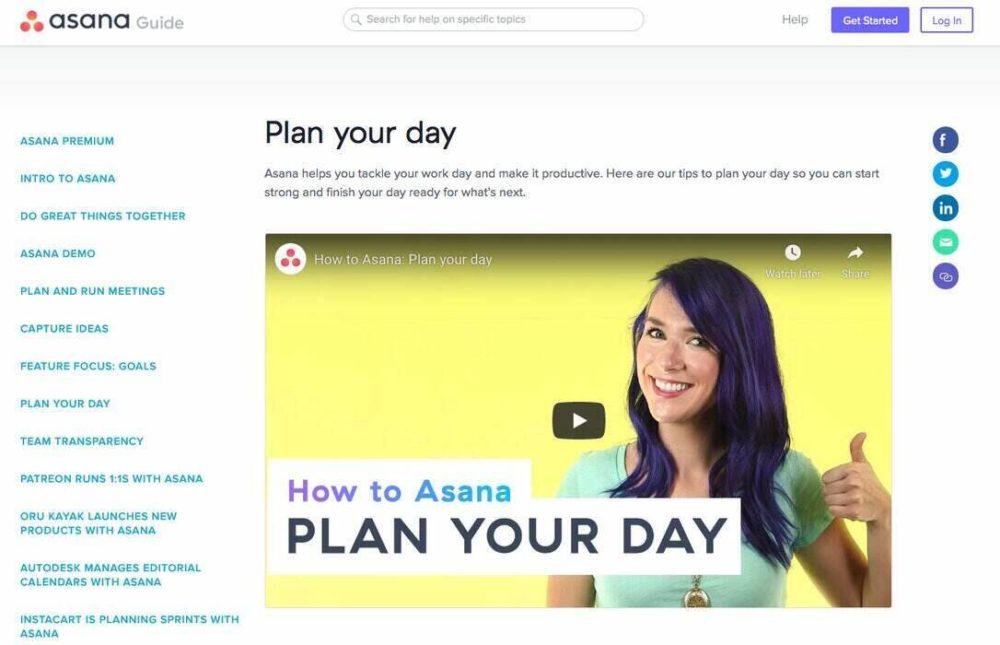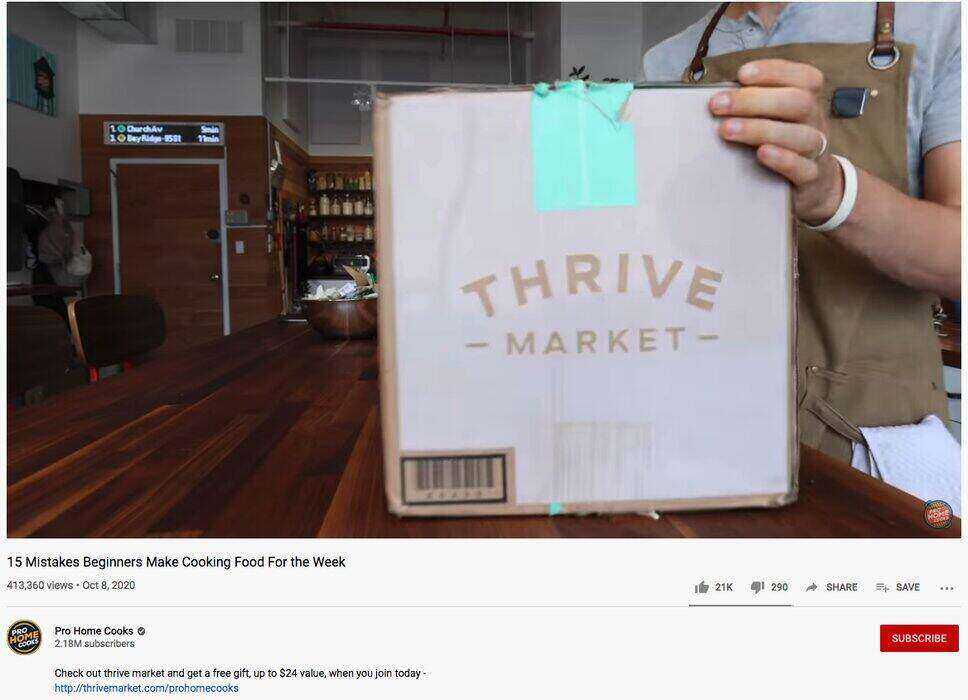Hello!
It's no secret that marketing costs have been on the rise for the past decade. According to the February 2020 edition of the CMO Survey, marketing budgets take up as much as 11.3% of total company budgets. Out of this sum, a large chunk goes to direct marketing, social media, and branding. Additionally, customer experience is steadily taking over the lead as the most invested-in growth strategy.
 For small and medium-sized businesses, this data represents a well-rounded guide on how much they're supposed to allot to CRM, branding, and product placement.
For small and medium-sized businesses, this data represents a well-rounded guide on how much they're supposed to allot to CRM, branding, and product placement.
Nonetheless, there is one fact that must not be forgotten. For large companies with huge revenues, 10% of their budgets still grants a hefty sum to invest in business growth. For smaller brands, however, 10% may not add up to as much as they need.
And this poses the crucial question: what can small businesses do to get the absolute most out of their marketing budgets? If you're looking for a way to grow your business with limited funds, the following low-cost, high-ROI marketing tactics are the ones most worth investing in.
1. Content Marketing
One of the most effective strategies for growing your business is to invest in content marketing. As a method that drives organic traffic, content supports branding, increases visibility, builds authority, and boosts conversions.
 Moreover, it's a low-cost, high-ROI tactic that can take almost any shape or form, which means you can completely adapt it to your audience's preferences.
Moreover, it's a low-cost, high-ROI tactic that can take almost any shape or form, which means you can completely adapt it to your audience's preferences.
Best of all, however, is that you can produce your own content at a low cost or choose the right collaborators and outsource at affordable rates.
The most basic form of content, and the one that'll work for most people, is text. A company blog will allow you to choose and cover relevant topics, targeting long-tail keywords, and offering value to potential and returning customers.
Of course, if you're more tech-savvy and don't mind experimenting with formats, video or audio could work even better. The average engagement rate for video content is 52%, according to Smart Insights, and you can use it on a multitude of platforms, including social media, YouTube, landing pages, and email.
2. SEO
Another low-cost, high-ROI tactic you need to invest in regardless of your marketing budget is going to be search engine optimization.
As a practice that focuses on SERP positioning and organic traffic, this strategy can be implemented at a minimal cost, allowing you to save your marketing budget for when you actually need it.
 There's a lot to nailing SEO (which is why many businesses opt for professional services), but there are a few basics you can do even on your own:
There's a lot to nailing SEO (which is why many businesses opt for professional services), but there are a few basics you can do even on your own:
• Do in-depth keyword research and focus on search terms with high potential and low competition.
• Optimize your website, landing pages, and content for the keywords you found.
• Speed up your website so that it ranks better on SERPs.
• Generate high-quality backlinks to your website from authority websites.
• Optimize for user experience by improving structure, navigation menus, security protocols, and removing irrelevant/duplicate content.
3. Social Media
Another way you can acquire and retain customers is to keep an active presence on social media. Seeing that over 3.6 billion people use social networks last year, the most popular ones being Facebook, YouTube, Instagram, and TikTok, these online spaces allow businesses to expand their reach at a low cost. In fact, TikTok is the new kid on the block: discover why TikTok is the next stop for brands and influencers.
 Of course, in addition to approaching social media as a way to post content and engage with users, it's also not a bad idea to look at it as a source of traffic and conversions.
Of course, in addition to approaching social media as a way to post content and engage with users, it's also not a bad idea to look at it as a source of traffic and conversions.
By creating well-targeted, highly engaging social media campaigns, you can reach potential buyers and drive them to your website. From there, depending on their position in the sales funnel, they can assess your products and become more familiar with your brand. Or, they can convert by making a purchase or signing up for your newsletter.
As you're probably aware, the most successful marketing tactics are those made based on data, so make sure to combine built-in analytical tools with third-party resources. Most platforms allow you to track engagement and conversions in-app, but if you connect them with Google Analytics, you can see exactly what percentage of your website traffic comes from social.
Moreover, you can assign value to almost any action users take so that you can get a better idea of how much you spent on social media ads vs. how much you made as a result.
4. Referrals
There's a lot of talk about customer retention being cheaper and more effective long-term than customer acquisition. And, if you consider consumer behavior, that makes absolute sense.
 According to research, consumers are increasingly distrustful of all forms of advertising. Moreover, they're going at great lengths to do research before purchasing, with 82% of buyers saying that they read online reviews. If we combine this knowledge with the fact that most people trust friends, family, and influencers when it comes to shopping advice, it becomes quite clear why referral and affiliate programs work exceptionally well.
According to research, consumers are increasingly distrustful of all forms of advertising. Moreover, they're going at great lengths to do research before purchasing, with 82% of buyers saying that they read online reviews. If we combine this knowledge with the fact that most people trust friends, family, and influencers when it comes to shopping advice, it becomes quite clear why referral and affiliate programs work exceptionally well.
The one thing to consider about adopting this type of marketing strategy is that it requires either a development process (which can be costly) or the use of a third-party software solution like ReferralCandy or Tapfiliate.
Once you've sorted the technical details, you can go on to add a section to your website, encouraging existing clients to spread the word about your business.
To motivate your customers to spread the word, you can offer attractive incentives, as in the case of Girlfriend Collective. This online store decided to gift $10 off for first-time buyers as well as a free pair of leggings for the person who recommended them. No matter what type of gift you decide to give away in the end, it's a win-win situation as you get increased revenue and new customers at the cost of a small discount/product.
5. Email
 Though often considered old-school, email marketing is (still) a cheap strategy that can offer a high ROI.
Though often considered old-school, email marketing is (still) a cheap strategy that can offer a high ROI.
Not only can you create campaigns for absolutely free, but email allows you to target existing and potential customers who are in the lowest section of the sales funnel, i.e., those who have already chosen to subscribe to your messaging.
What many businesses struggle with, however, when it comes to email, is lead generation. When used the right way, email marketing can be a powerful attraction marketing strategy for your business.
On the whole, consumers are predominantly dissatisfied with how brands use their personal data. In addition to limiting tracking and using ad blockers, 67% of peoplealso give false information to companies. What this means for brands is that they must work on developing trust with their potential customers.
 But, while transparency is the best way to build relationships, it's also one of the slower methods of boosting revenue. So, a well-developed marketing campaign may prove to be more effective for lead generation. (Of course, the collected data still needs to be used responsibly and nurtured into paying customers.)
But, while transparency is the best way to build relationships, it's also one of the slower methods of boosting revenue. So, a well-developed marketing campaign may prove to be more effective for lead generation. (Of course, the collected data still needs to be used responsibly and nurtured into paying customers.)
Although pop-ups do make for the most popular newsletter sign-up forms, they're far from the most effective.
For better results, it's not a bad idea to pique customers' interest with perks, discounts, or gifts.
Runners Athletics creatively did this by including a spin to win wheel on their homepage and limiting the amount of time web visitors had to use the offer. It's a strategy that combines the two elements of unique benefits and urgency.
6. Social Proof
 As already mentioned, most consumers tend to distrust brands, which makes it more challenging to create effective marketing campaigns. However, if businesses know that buyers tend to gravitate towards online reviews, they can take steps to encourage consumer feedback.
As already mentioned, most consumers tend to distrust brands, which makes it more challenging to create effective marketing campaigns. However, if businesses know that buyers tend to gravitate towards online reviews, they can take steps to encourage consumer feedback.
Even more, they can show it off on their homepage.
If you're looking for inspiration about displaying social proof on your website, you can take a look at the Bay Alarm Medical website.
In addition to showing off the impressive 4.7 Google Rating on its homepage, the company also has a dedicated reviews page. Here, potential buyers can find a variety of feedback, including press mentions, YouTube content, as well as testimonials from over 20 sources like Facebook, Trustpilot, PC Mag, and others.
The best thing about this tactic is that displaying reviews comes completely free. Despite its cost, however, it holds the potential of exponentially boosting sales by up to 44% per 200 reviews.
7. Influencer Marketing
If you're trying to raise awareness about your products, but are on a budget, then it may not be a bad idea to consider influencer marketing as a possible solution. Of course, don't expect one of the Kardashians to post about your brand in return for a free t-shirt. But, you can still choose influential social media users and collaborate with them to reach a wider audience.
The main principles of influencer marketing are research and compatibility. Before reaching out, make sure that you've done your homework and studied the followers, values, and posting habits of your top contenders. Then, you can get in touch and propose a collaboration.
 What's good to have in mind is that most users with over 100k followers will tend to ask for monetary compensation, so it's not a bad idea to look for micro-influencers whose followers aren't as numerous but should be generally more engaged.
What's good to have in mind is that most users with over 100k followers will tend to ask for monetary compensation, so it's not a bad idea to look for micro-influencers whose followers aren't as numerous but should be generally more engaged.
As for ways to grow consumer trust (and drive sales) through influencer marketing, there are a lot of ways you can go about your collaborations.
You can choose to sponsor a creator, as done by Thrive Market for YouTube channel ProHomeCooks. Do keep in mind that this may come at a high cost, depending on your chosen collaborator's following. In general, sponsored posts run at a rate of $10-$20 per 1000 followers.
Alternatively, you can choose small-scale influencers and send them free products. They will tag you in their posts and stories, and you can further share those on your timeline for maximum reach.
For example, ecoegg partnered with German micro-influencer @herzensplatz, sending the Instagram user a free product in exchange for a post mentioning their brand. Now, although this tactic may not be as effective as working with someone who has 2 million followers, it's a relatively cheap solution with undisputed positive results.
8. User-Generated Content
Last but not least, when looking for budget-friendly marketing tactics, don't forget to use what you already have.
In addition to repurposing content you produced, it's not a bad idea to look into what your followers posted about your products/services.
 For example, if you get great feedback in your social media DMs, you can ask the person who sent it for approval to share a screenshot in your posts or stories. Or, you can encourage users to share feedback about your brand by having a dedicated hashtag they can use.
For example, if you get great feedback in your social media DMs, you can ask the person who sent it for approval to share a screenshot in your posts or stories. Or, you can encourage users to share feedback about your brand by having a dedicated hashtag they can use.
This is what Gili Sports did on their Instagram profile, where they asked customers to share pictures of themselves using the paddleboards with the hashtag #GILISPORTS.
The most beautiful and creative visuals get featured on the brand's page, while the hashtag itself serves as an additional discovery channel for any potential customers.
Also read:
- Business Smoke Detectors Technology 7 Benefits
- What is White-Label Marketplace Software?
- A Quick Guide to Men’s Socks Styles for Ultimate Comfort
The ROI of Low-Cost Marketing Tactics
As you can see, there are many budget-friendly ways of marketing your company and products that still bring great results. Indeed, in the digital world we're currently living in and that keeps changing, marketing like a big business is possible and doable even with a small budget.
However, before dropping everything and making these the basis of all your advertising, take some time to contemplate two key questions.
 Firstly, how much is your time worth?ds DIY is cheap, but it's not always the most cost-effective way to get things done. Before you dedicate all your work hours to marketing, think about the more effective ways to use your resources.
Firstly, how much is your time worth?ds DIY is cheap, but it's not always the most cost-effective way to get things done. Before you dedicate all your work hours to marketing, think about the more effective ways to use your resources.
You may find that outsourcing or even hiring a full-time employee will give you the desired results without having to sacrifice other areas of your business.
And lastly, are these tactics enough?
While highly effective and sometimes even irreplaceable, cheap marketing tactics won't work on all occasions. If you're running a special offer, or if you're just starting out, a well-planned PPC campaign may prove to be more efficient. It may allow you to collect feedback and data on which you can base your content and SEO strategies in the future.
Thank you!
Subscribe to our newsletter! Join us on social networks!
See you!






